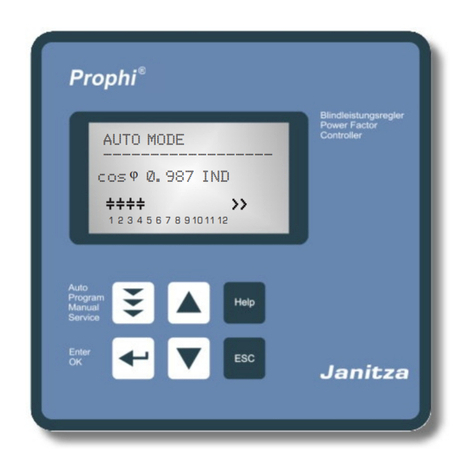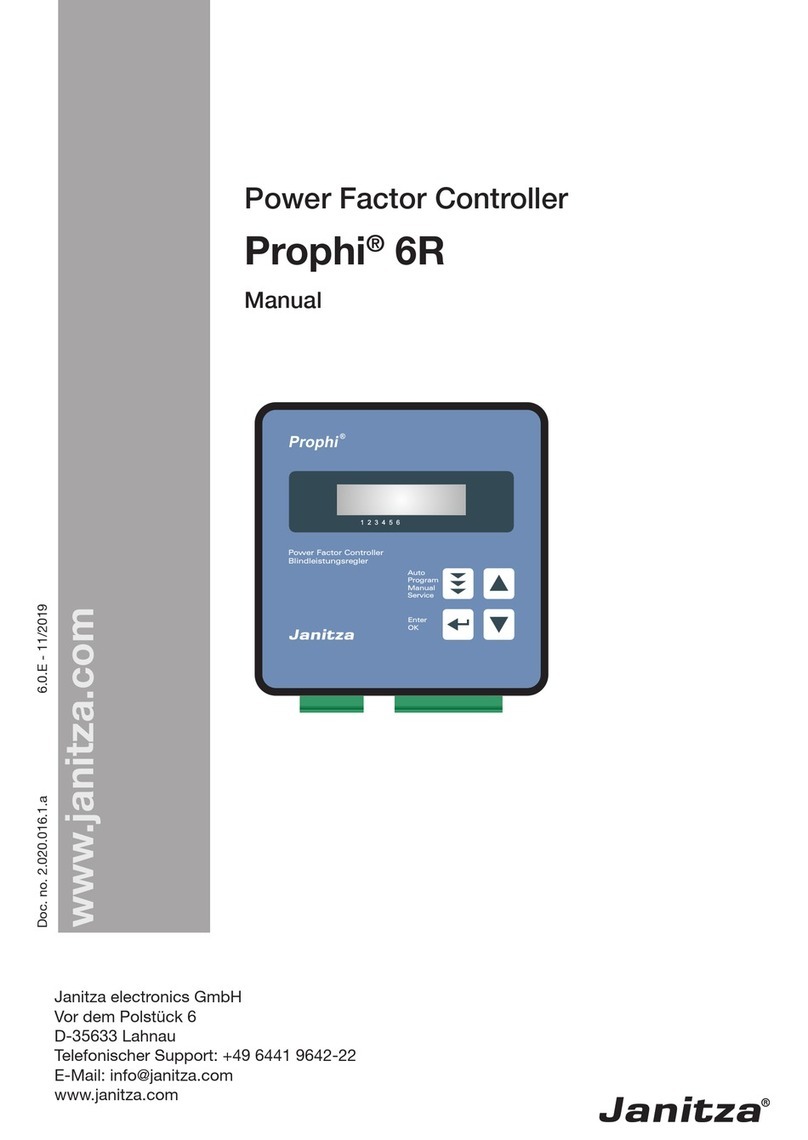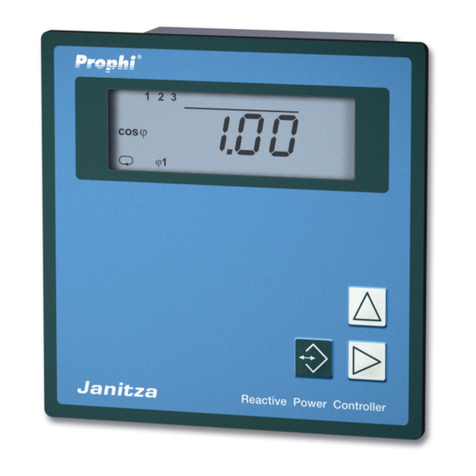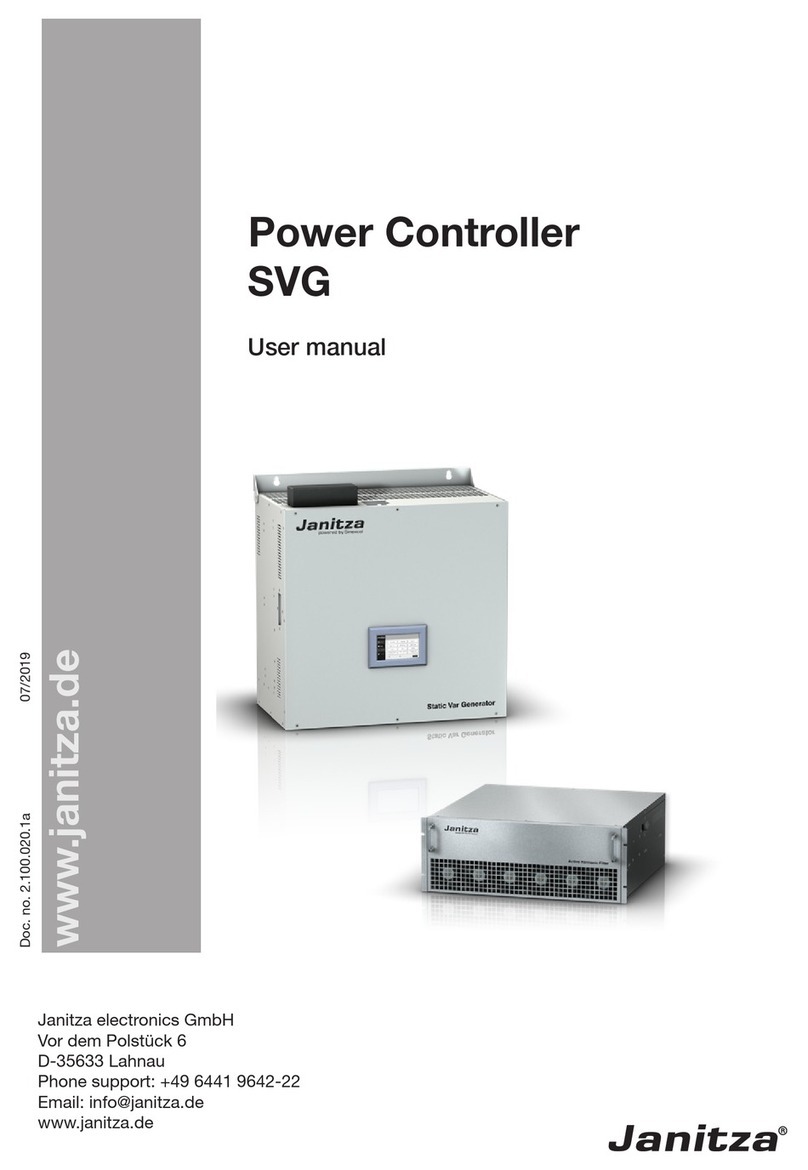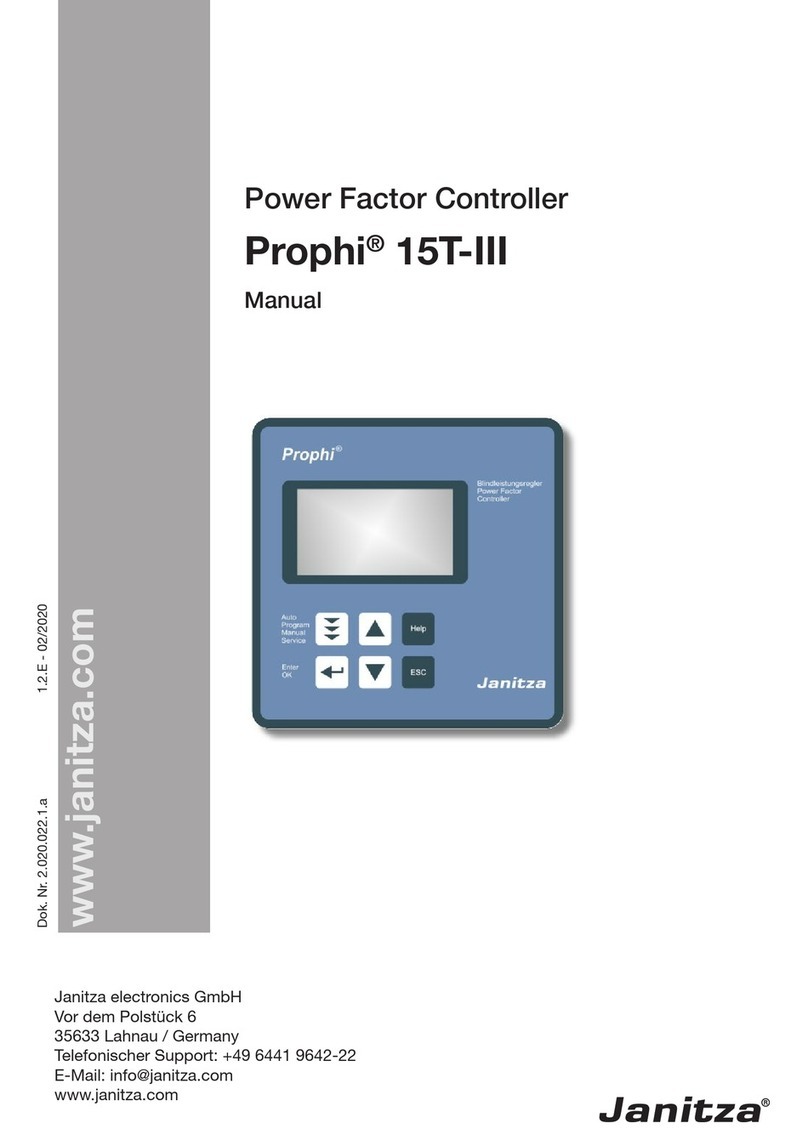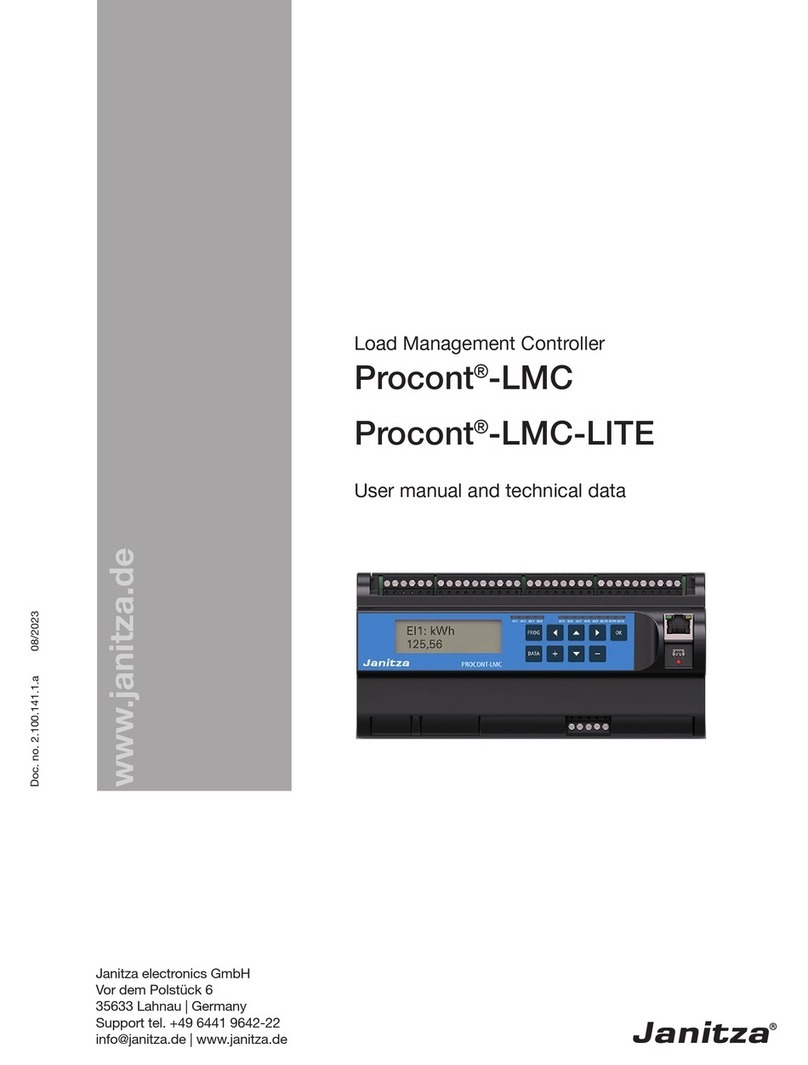
Prophi®6T
7
2.3 Alarm output / error messages
The alarm contact is closed in normal operation and opens in the event of a fault. The
relevant fault is simultaneously shown on the display in plain text (alternating with the
standard display in automatic operation). The following fault messages are displayed:
UNDER-COMPENSATED Display and relay output
missing reactive power
OVER-COMPENSATED Display and relay output
OVERCURRENT Display and relay output
MEASURING VOLTAGE ? Display and relay output
OVERTEMPERATURE Display and relay output
OVERVOLTAGE Display and relay output
UNDERVOLTAGE Display and relay output
HARMONICS Display and relay output
Section 3 Operating modes
When the operating voltage is switched on, the device displays its designation and
software version, then changes to its normal operating status (automatic operation). The
active cos-phi value is always displayed in the upper line and the currently connected
capacitors are shown as symbols in the lower line (operating display).
Additionally several messages for different operation states are generated. An individual
adjustment resp. suppression of particular messages is possible in expert mode 2. During
suppression, the indication of the message in the display, a possible release via alarm-
relays and effects on the controlling process will be prevented.
Automatic operation
Display of active power-line cos phi
Active capacitor
branches
Control direction
(here connected-in)
Supply display (for
4-quadrant operation)
The control direction is symbolized
by a closed arrow
The connecting-in arrow is always
located after the maximum possible
number of stages (end stop)
An open arrow indicates that the
required blocking time (discharge
time) is running before an impending
switching step
A double arrow symbolizes fast
switching of several branches
Connecting-in
Connecting-out
Automatic oper.
to display operation to programming to manual operation to value buffer to special functions
Programming Manual operation Service Expert mode
Repeated pressing of the "Operating Mode” key takes the user to the various menus in
sequence: Automatic operation - Programming - Manual (manual operation)-
Service - Expert mode and back.
cos 0.76 IND
j






